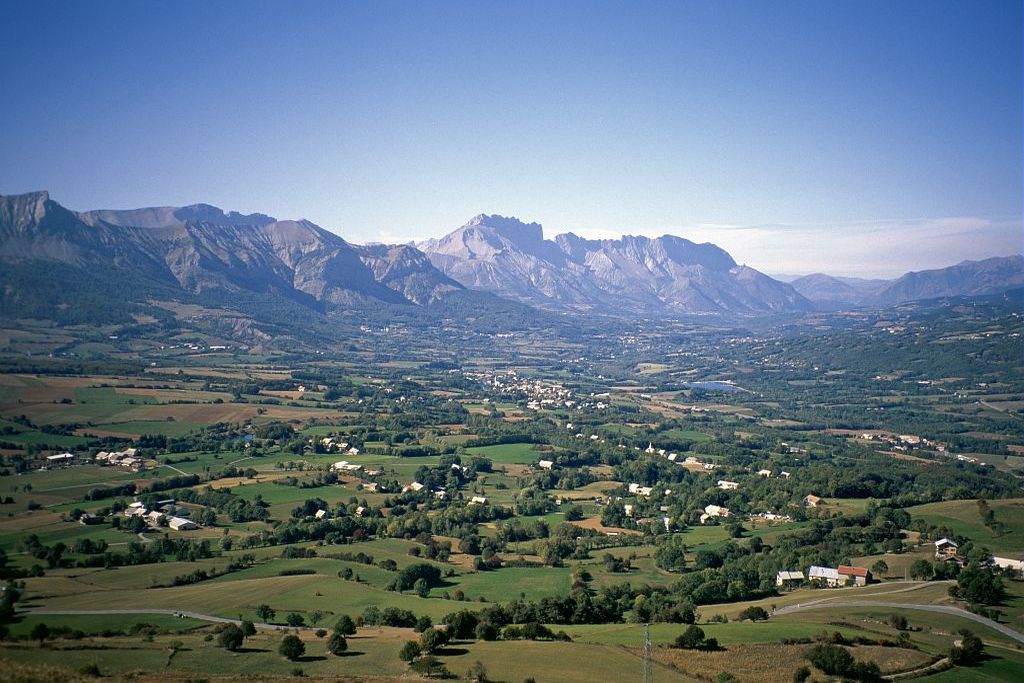
Woodland discovery trail
On a hot summer’s day, walking under the cover of the ash trees to the lapping sound of a little canal, in harmony with the birdsong, is a real experience of peace. As you go round a bend in the path you might spot a deer or a fox. This is an introduction to another aspect of the Massif des Ecrins, far from the high mountains, but one that is not at all lacking in charm.
Description
From the small car park near a large sheepfold and panels describing the route (near the bus stop), follow the blackbird symbols marking the circuit. The route is very easy, with a path lined with hedges leading to the old Les Costes road, which is now a track. Turn right and continue for about 200m. The "blackbird" tells you to turn right again and go down towards the St Eusèbe road. You have to cross a ford in a small stream (not difficult). Once on the tarmac road, you again turn right towards the village of Beaurepaire, which fully deserves its name (“beautiful spot”). Cross the village, then go up to the right again as you leave the village. A little road takes you up to the car park where the trail began.
- Departure : Beaurepaire
- Towns crossed : Chauffayer, Les Costes, and Saint-Eusèbe-en-Champsaur
11 points of interest
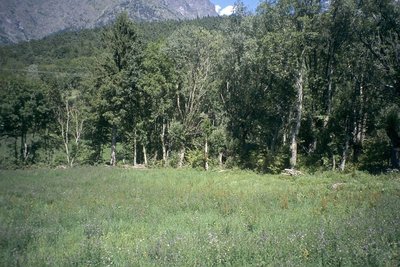
Haie du bocage de Saint Eusèbe - Richard Bonet - PNE  Flora
FloraThe bocage, a landscape of fields and hedgerows
The bise, a cold north wind, often blows in the Champsaur valley. The hedges in this landscape protect the crops from drying out and being flattened. This is a livestock rearing region, and the meadows provide hay for the winter. Cereals supplement the cattle's feed.
Part of the network of farmland irrigation canals still remains. Due to lack of maintenance, some of the canals have dried out and become invaded by weeds and shrubs.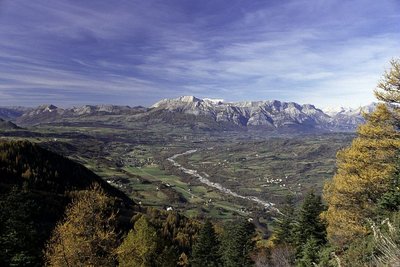
Le Drac dans la vallée du Champsaur - Michel Francou- PNE  Water
WaterWater courses in the Champsaur
Due to its geographical situation, the Champsaur has always lacked water in the summer. Yet it is crossed by the Drac Noir, the Drac Blanc, the Séveraisse which flows from the Valgaudemar valley and the Séveraissette which drains the Molines valley. These rivers rise in the mountains. So a water resource exists; it just has to be brought to the crops.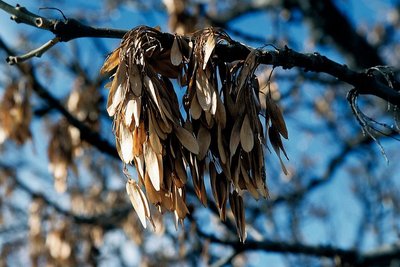
samares de frêne commun - Bernard Nicolet - PNE  Flora
FloraThe ash tree
This is incontestably the tree that has most shaped the hedgerows of the Champsaur. Its etymology confirms this: in Greek « phraxis » means « hedge ».
It is a tree with multiple uses. It is excellent for firewood and tool handles and is used by carpenters. Its leaves are gathered for forage. The ash tree can also be appreciated in a different way as frênette or ash cider. It is made with dried leaves as an infusion with the addition of sugar and baking yeast. The mixture is left to ferment for a while in barrels and then bottled, for a fresh and sparkling drink.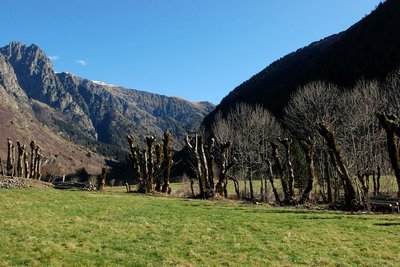
Haie de frênes têtards - Bernard Nicolet  Flora
FloraPollarded tree
The oak can be regularly topped and cut back, giving it a pollarded habit. A pollarded tree is a tree with a short trunk topped by a "head" and a crown of branches. In addition to their landscaping aspect, oaks cut in this way provide a home for numerous animals. In fact, the small crevices in the trunk constitute a valuable shelter for many animal species. Cave-dwelling birds like owls make their nests in them. The hollow trunks often provide refuge for small mammals like bats or dormice. Many insects nest and find cover in them.
In short, this is a tree with multiple uses which contributes to broad biodiversity.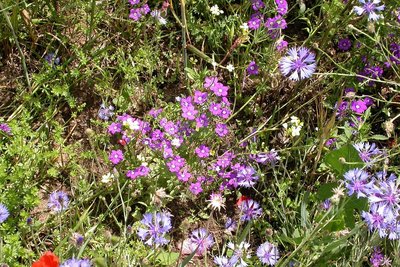
Messicoles, Coquelicots, bleuet, Miroir de Vénus, dans un champ de céréales - Olivier Warluzelle - PNE  Flora
FloraProtection of messicole plants in the Champsaur
In the Champsaur, not only the poppy and the cornflower but also plants such as the corncockle, night-flowering catchfly, pheasant's eye and Venus's looking-glass can still be seen growing among the cereal crops. They are an indication of the restricted use of herbicides by some farmers, a practice to be encouraged from many points of view.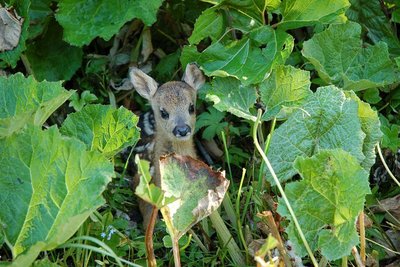
Chevreuil caché dans la végétation de bord de ruisseau - Dominique Vincent - PNE  Fauna
FaunaWildlife in the bocage
An astonishing diversity of wildlife thrives in the bocage - this mosaic of habitats made up of hedgerows, meadows, woods and wetlands. Here, you might come across butterflies, birds, yellow-bellied toads, badgers or even bats, as well as very varied plant life.
It is a remarkable example of how the interests of agriculture and biodiversity can converge, where time-honoured practices are maintained without falling into the trap of intensive farming. Beware - fragile balance ahead!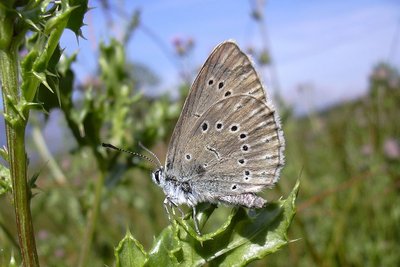
Azuré de la sanguisorbe - Gil deluermoz  Fauna
FaunaScarce large blue
The scarce large blue is, in fact, a small blue butterfly of the genus Maculinea. These butterflies have a distinctive biology. First, the caterpillars need a specific host plant on which to feed and, second, they have to be collected by ants and taken into the ant nest, where they complete their development.
This complex life cycle renders the species highly vulnerable to changes to their habitat and the Maculinea are regarded as threatened across the entire national territory and across Europe.
There are four species of Maculinea in France, all protected. They are the subject of a national action plan which aims to better understand the conservation status of their populations and to protect their habitat.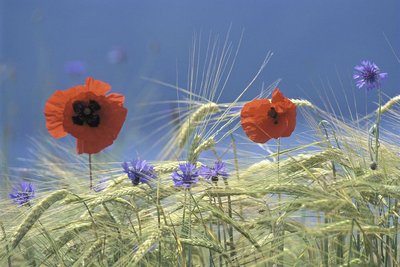
Plantes messicoles - Bertrand Bodin  Flora
FloraMessicole
Plants growing among crops are often regarded in farming as «weeds», and therefore to be destroyed. Herbicides have proved to be highly effective, to the point of threatening the survival of these species and diminishing botanical diversity. This has meant that in many regions the poppy and the cornflower have disappeared from our grain fields, which are now a uniform gold at harvest time. These plants which grow alongside our crops are called «messicole» plants. Many are of Middle Eastern origin. Whether perennials or annuals, they are adapted to surviving - and even benefiting from - the working of the fields.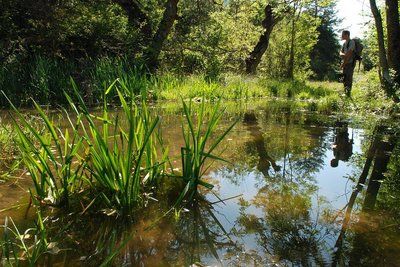
Mare de Bidoye à proximité du sentier du bocage - Dominique Vincent - PNE  Water
WaterThe irrigation canals and wet areas
Gravity-fed irrigation canals were built in the Champsaur as far back as the Middle Ages. To avoid conflict, syndicates were formed to share out the water resource between the various users, as evidenced by letters of complaint which can be consulted in the departmental archives. These canals were dug directly into the ground, and some of the water flowing through them seeped into the earth, feeding springs and wet areas which contain adapted animal and plant species, some of which are in decline.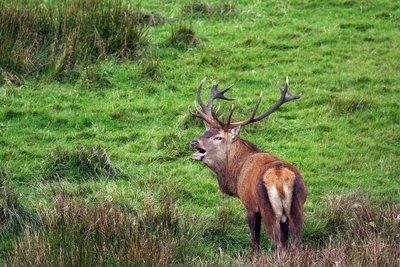
Le brame du cerf - Jean-Philipe Telmon - PNE  Fauna
FaunaThe arrival of deer
Present in number in Le Dévoluy, deer regularly cross the Drac to make incursions into the hedged areas and fields. A few individuals are currently in the process of taking up residence on the left-hand bank of the Drac. Soon, the grunting bark of the deer will resonate from the cover of the hedgerows.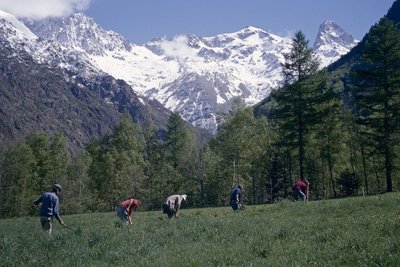
Entretien des canaux d'irrigation - Gilbert Durand - PNE  Know-how
Know-howMaintenance of the canals
The number of farmers is falling and it can be difficult to gather enough volunteers for collective maintenance operations. Especially because in some areas sprinkler systems have been installed, in which water is pumped through pipes under pressure, and reaches the crops as a fine rain. These recent developments are not without impact on the canals and the wetlands associated with them.
Forecast
Altimetric profile
Recommandations
A very easy hike, ideal for families.
Information desks
Tourisme Office of Champsaur & Valgaudemar
Les Barraques, 05500 La Fare en Champsaur
Access and parking
From the N85 at Chauffayer turn onto the D23 towards La Motte-en-Champsaur, Les Costes and Molines. Continue for 2 km along the D23 and stop at the trail information panels.
Parking :
Source

Report a problem or an error
If you have found an error on this page or if you have noticed any problems during your hike, please report them to us here:

